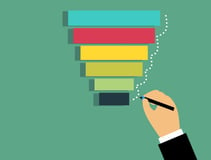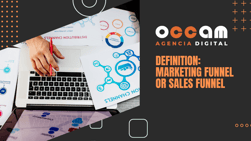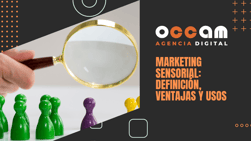Index Content
Although we have never stopped to think about it carefully, every purchase we make goes through a decision-making process until we finally get it. Sometimes, it is a process that we do not have time to analyse because it is very short and quick, for example, choosing one cereal or another in the supermarket. However, when it comes to buying a car or contracting business management software, the purchasing process is longer and more extended in time.
Therefore, the user journey is the process a person goes through to buy a product or service from the moment a need arises until the final purchase is made.
Analyse your customers' experience
The experience of our customers is part of the user journey. When a user has a need, they consider purchasing a product or service to solve it. From the moment the user's need arises until they finally make the purchase, they go through a process in which it is important to ensure they have a good experience so that they choose us and not the competition.
That is, when a person starts to browse through the different brands that have the product they are looking for, they will find multiple options to choose from. However, they will not only choose based on price, but also on the experience offered by the company. For example, the website that is more intuitive, more explanatory about the operation of the products... will make the user more attractive to choose a particular company and not another.
Therefore, to analyse the customer experience of our website and make it more satisfactory, it is important to know the different phases that the user goes through and how to design the user journey of our brand.
Phases of the user journey
In our Inbound Marketing strategy, we need to have well-built profiles of our buyer personas before starting to build the user journey. The buyer personas, as we have already mentioned in other posts, are our ideal customers, to whom we want to direct our products, how they act, what their preferences are, etc. And around whom most of our commercial action will revolve.
Therefore, it is important to have well-defined profiles before starting to design our customer journey, or user journey.
In addition, the design of the user journey will also help us with the creation of the profiles of our buyer personas. One of the main elements on which we focus when creating the profiles of our ideal customers are the pain points (pain points) such as: needs, problems, frustrations, etc. And it is precisely because of a pain point that users begin the user journey process.
For example, imagine that a person who wears glasses is very tired of wearing them because they are uncomfortable, they do not like the way they look on their own image... And having this concern (pain point) they start looking for solutions and find that, for example, one solution would be to have an eye operation. That is when the user starts to look for companies that can perform this work and compare options.
Once we know how the user journey works, it is important to know what the phases are before starting to design our own:
When starting to determine the phases, it is sometimes difficult to know which is the first phase in which the user starts to investigate. For this reason, the first phase of the user journey would be awareness: the user realises that there is a problem and starts to consider the idea of looking for a solution.
Then, after the awareness phase, come the phases of the user journey on which we can develop our marketing strategies to generate a more satisfactory experience: discovery and learning.
- Discovery: The user is already aware that he has a need and is looking for a way to solve it. At this point, when the customer has started to research and look for brands to cover his need, our brand must position itself by offering him an efficient and effective response, so that he knows that we can help him with his problem.
- Learning: At this stage the consumer has already learned what the possible solutions to their problem are and who can offer them. From our brand we can influence this phase with content focused on establishing a purchasing criteria and identifying business needs.
Once these two phases have been overcome, the choice phase takes place. Here, the consumer narrows down his list of options, starts contacting brands to make a final decision. The company has to demonstrate here that it is the best choice for the customer.
Finally, there comes the purchase phase, where we can do nothing more. The customer has made a decision, and all that remains is to hope that he has chosen us.
Designing the user journey
Now that we have explained what the user journey is and the stages it goes through, it is time to design the user journey map. At this point we must know how to integrate all the information we have obtained about our buyer persona, know which stages of the process we can influence more strongly and create content strategies appropriate to their needs to ensure that the customer ends up trusting us.
Having drawn on a map all the processes or phases through which the customer goes through until they make the purchase, pointing out the points on which we can have more impact will help the customer not only to choose us for this purchase, but to generate loyalty so that they continue to choose us on other occasions.
To create such a map, you must take into account the following aspects:
- Define our buyer persona: Use our buyer persona design to start interacting with the user and find out how we can help them meet their needs.
- Define a timeline : Outline the moments in which each of the phases will occur to know in which of them we can interact with the consumer.
- Establish points of contact: Know through which channels we are going to contact the user and we are going to send them information about our brand and how we can help them solve their problems.
- Create "wow" points: That is, know at which points of contact the relationship and communication with the user will flow in the right way and we will have more influence on their decision.
- Consider emotions: Understand what pain points have led the user to seek a solution and know how we can approach them without being too intrusive with their opinions and/or decisions.
In short, designing the user journey will help us to get to know our buyer personas better, to know which pain points have led them to make the decision to choose our brand and will help us in the Inbound Marketing strategy. Dedicating our company's commercial action to focus on the needs of our users is one of the main objectives of this marketing strategy.






